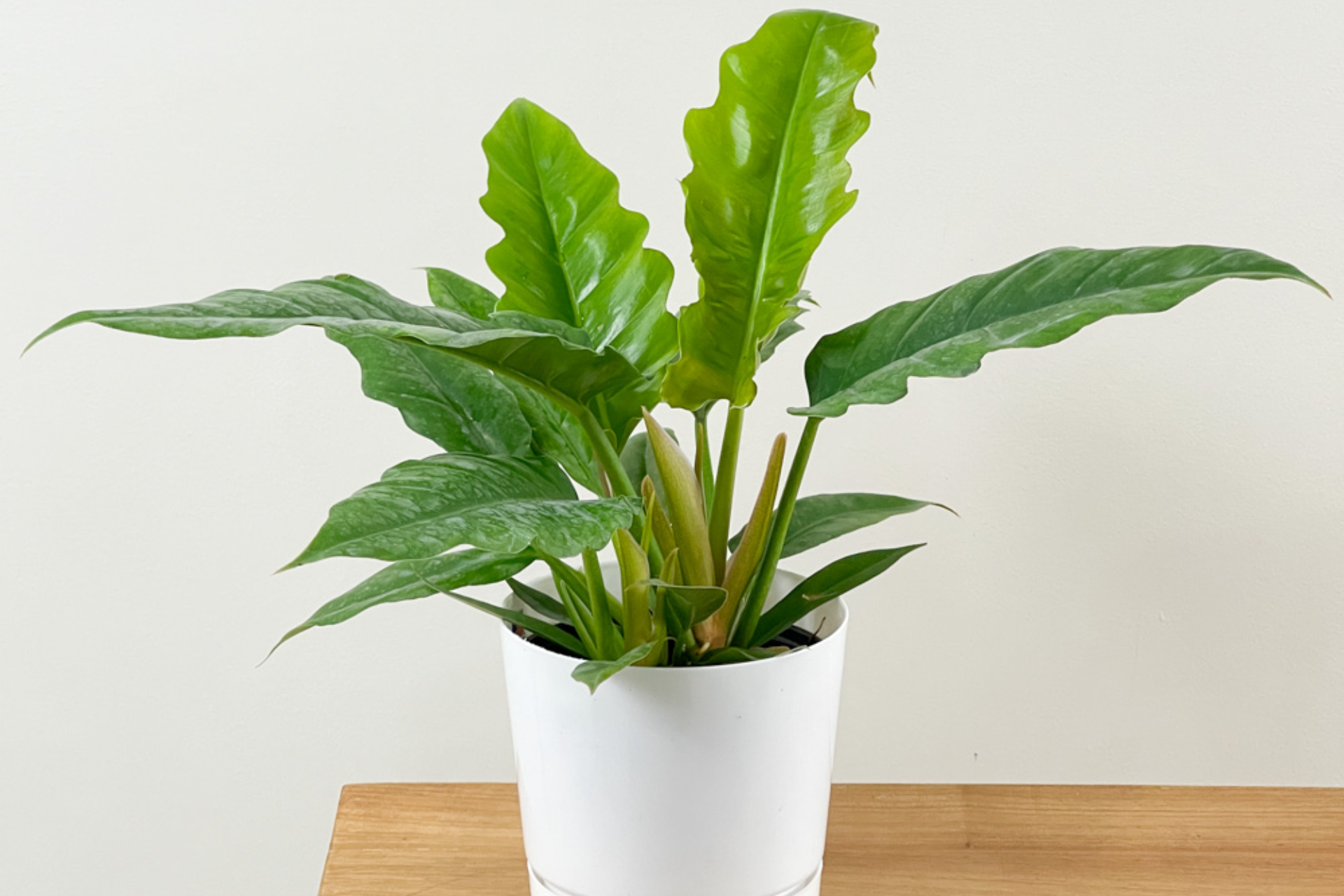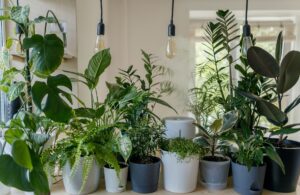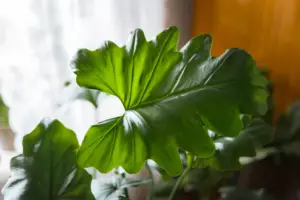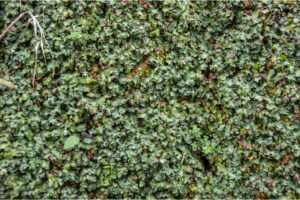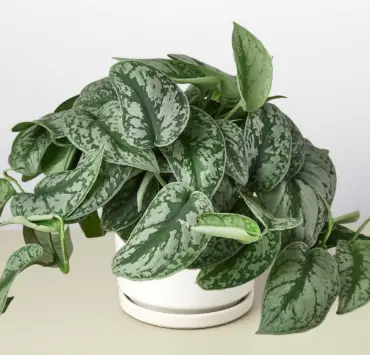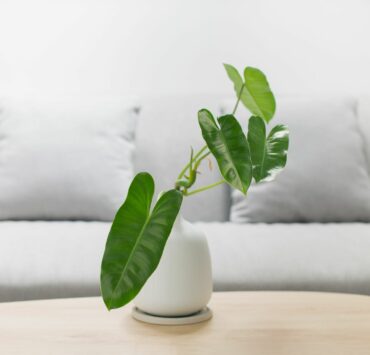Philodendron Narrow, also known as Philodendron ‘Tiger Tooth’ or ‘Ring of Fire,’ has become a must-have addition to indoor plant collections worldwide. With its striking, narrow, and deeply lobed leaves that grow on long, elegant stems, this tropical beauty is both aesthetically pleasing and easy to care for. This article will explore the origin, characteristics, care instructions, and propagation methods of the Philodendron Narrow, offering you the ultimate guide to successfully grow and maintain this stunning indoor plant.
Origin and Characteristics
The Philodendron Narrow belongs to the Araceae family and is native to the tropical rainforests of Central and South America. This evergreen plant is a climbing or trailing variety, making it an excellent choice for hanging baskets, wall-mounted planters, or indoor trellises.
The leaves of the Philodendron Narrow are its most captivating feature. They can grow up to 2-3 feet long, with a distinct narrow, serrated appearance that sets it apart from other Philodendron varieties. As the plant matures, its leaves develop a more dramatic and deeply lobed structure, giving the Philodendron Narrow its unique, exotic appeal. The foliage color ranges from a deep green to a lighter green with yellowish tones, adding to its visual charm.
Care Instructions
Light
The Philodendron Narrow thrives in bright, indirect light. Avoid direct sunlight, as it can cause the leaves to scorch or become discolored. It can tolerate lower light conditions but may exhibit slower growth.
Water
Allow the top inch of soil to dry out between waterings. Overwatering can lead to root rot, while underwatering may cause the plant to wilt or lose leaves. It’s essential to strike a balance to maintain a healthy plant. To ensure proper hydration, water the plant thoroughly, allowing excess water to drain from the bottom of the pot.
Humidity
As a tropical plant, the Philodendron Narrow prefers high humidity levels, ideally around 60-70%. To maintain humidity, you can place a tray filled with water and pebbles beneath the pot, mist the leaves regularly, or use a humidifier.
Temperature
Keep your Philodendron Narrow in a room with temperatures between 65-80°F (18-27°C). Protect the plant from drafts, sudden temperature changes, and extreme cold, as these can stress the plant and cause leaf damage.
Soil
Use a well-draining, high-quality potting mix with added perlite or orchid bark for increased aeration. This will prevent waterlogging and encourage a healthy root system.
Fertilizer
Feed your Philodendron Narrow with a balanced, water-soluble fertilizer diluted to half strength every 4-6 weeks during the growing season (spring and summer). Reduce feeding frequency during the fall and winter months.
Pruning
Regularly prune your Philodendron Narrow to maintain its shape and encourage bushier growth. Remove any yellowing or damaged leaves to improve the overall health of the plant.
Propagation
There are two methods to propagate Philodendron Narrow: stem cuttings and air layering. Both methods are relatively easy, even for novice gardeners.
1. Stem Cuttings
Take a stem cutting with at least one node and a couple of healthy leaves. Remove the lower leaves, leaving a small section of the stem exposed. Place the cutting in a jar of water or moist potting mix. Keep it in a warm, brightly lit spot, changing the water regularly or maintaining the soil’s moisture. Roots should begin to develop within a few weeks. Once the roots are a few inches long, transfer the cutting to a pot filled with well-draining potting mix.
2. Air Layering
This method involves encouraging roots to grow on the stem while it’s still attached to the parent plant. Select a healthy stem with at least one node. Make a small upward-angled cut about one-third of the way through the stem, just below the node. Place a toothpick or small twig in the cut to keep it open, and apply rooting hormone to the exposed area. Wrap the cut with damp sphagnum moss, and then cover it with plastic wrap to maintain humidity. Secure the wrap with twine or rubber bands. Check for root development after 4-6 weeks. Once a healthy root system has formed, cut the stem just below the new roots and pot the newly rooted cutting in a separate container.
Common Issues and Solutions
Yellowing leaves
Overwatering or poor drainage can cause yellowing leaves. Ensure that the plant is not sitting in water and allow the top inch of soil to dry out between waterings.
Leaf drop
This can be a sign of underwatering or low humidity. Adjust your watering schedule, and increase humidity by misting or using a humidity tray.
Pests
Philodendron Narrow can be susceptible to common houseplant pests such as mealybugs, spider mites, and aphids. Inspect the plant regularly and treat any infestations with insecticidal soap or neem oil.
Leggy growth
Insufficient light may cause the plant to become leggy, with elongated stems and sparse foliage. Move the plant to a brighter spot with indirect light to encourage compact growth.
Additional Care Tips
Repotting
Repot your Philodendron Narrow every 2-3 years or when the roots start to outgrow the current pot. Choose a pot that is 1-2 inches larger in diameter than the previous one, with drainage holes to prevent waterlogging. Spring is the best time to repot, as this is when the plant is entering its active growth phase.
Cleaning the leaves
Dust can accumulate on the leaves, reducing the plant’s ability to photosynthesize effectively. Gently wipe the leaves with a damp cloth or soft sponge to keep them clean and healthy. Avoid using leaf shine products, as these can clog the pores on the leaves and harm the plant.
Support
As a climbing plant, Philodendron Narrow benefits from added support. You can use a moss pole, trellis, or even a piece of driftwood to provide a structure for the plant to cling to as it grows. This will not only promote healthy growth but also create a visually appealing display.
Display Ideas for Your Philodendron Narrow
Hanging Baskets
Showcase your Philodendron Narrow’s cascading growth by placing it in a hanging basket. This allows the long, slender leaves to drape elegantly and creates a stunning visual effect.
Wall-mounted Planters
Transform an empty wall into a lush, vertical garden by mounting a series of planters containing Philodendron Narrow. This will create a striking focal point in your living space while saving valuable floor space.
Living Room Divider
Create a natural partition in an open-plan living area using a tall, narrow shelving unit filled with Philodendron Narrow plants. This will not only provide some privacy but also enhance the room’s overall aesthetic.
Indoor Trellis
Install a simple wooden or metal trellis against a wall and train your Philodendron Narrow to climb it. This will create a living, green artwork that adds a touch of the tropics to your interior design.
Bathroom Oasis
Philodendron Narrow thrives in high humidity, making it an ideal plant to place in a well-lit bathroom. Add a few other humidity-loving plants, such as ferns or orchids, to create a mini indoor jungle.
By providing the right care and creatively displaying your Philodendron Narrow, you can create a vibrant, tropical atmosphere in your home. This captivating plant will not only enhance your indoor space but also offer a sense of tranquility and connection to nature.
Philodendron Narrow is a stunning and versatile plant that brings a touch of the tropics to any indoor space. Its unique, deeply lobed leaves and low-maintenance requirements make it an ideal addition to any plant collection, from novice plant parents to seasoned indoor gardeners. By following the care instructions and propagation methods outlined in this article, you can cultivate a thriving, eye-catching Philodendron Narrow that will be the envy of plant enthusiasts everywhere.
